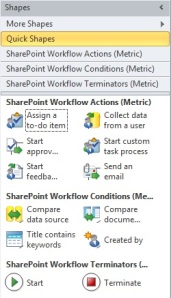There are many organisations using pure-play document management products for their document management (DM) requirements, indeed many large organisations may have a number of different DM products satisfying different business needs. The question is, should they remain on this platform or move to the ever-popular SharePoint environment for their Document Management needs?
There is no doubt that the SharePoint market is growing, and document management is one of the drivers for this. Initially seen as a platform for collaboration, SharePoint is now gaining credibility for its document management capabilities and is being considered by many organisations as viable options for enterprise content management (ECM) which encompasses the requirements for DM.
Internal IT departments are frequently quick to push this as a strategy; after all, it is a Microsoft product and quite often is already implemented in one form or another. However, it is also a common problem that the business requirements are shoe-horned into the already deployed SharePoint farm, as an IT driven project, rather than a project driven by user requirements. This lack of planning and governance, often with little thought of the usability of the system for the end users, can often result in a failed project. We have encountered many organisations who dismiss SharePoint as a platform for DM because of these failed early projects.
Careful considerations must be made on the configuration of SharePoint and this is best achieved by a carefully considered and constructed Information Architecture with the correct level of governance applied to the farm. Without this design and governance, it is very easy for an implementation to suffer from SharePoint sprawl where content is stored all over the place with nobody able to manage or contain the growth; increasing the cost of ownership and creating silos of information.
Pure-play DM products also require consideration and proper planning when being deployed, however, it is normally deployed by experienced partners who are aware of potential pitfalls. This may well increase the cost with initial deployments, however, cost of ownership could well be significantly lower. These products also focus predominantly on document and records management and this focus on documents is there principal raison d’etre. They have evolved over many years and have adapted to meet user demands for a user friendly, feature rich, integrated and compliant platform for managing organizational content.
SharePoint ultimately has collaboration as its core function, and this means that it may not be as strong as those products which have evolved around document management needs. For this reason, careful thought needs to be given before embarking on a document management project. Depending upon the level of functionality, records management capabilities, document management controls and regulation, may ultimately recommend whether an organization should select SharePoint or another product. Obviously a number of third party products to exist which deliver additional capabilities, such as Email integration, which brings SharePoint more in-line with pure-play products, but as mentioned earlier, user and business requirements should ultimately make the final decision.
If you are sharing selective content, requiring discussions around documents, the use of user forums and the possibility of opening up to the outside world, then SharePoint may well be the way to go. However, for day-to-day document management with strong records management capabilities (especially for regulated industries) and a more robust user experience, an organization may lean towards one of the pure play products such as Open Text or Documentum.
Every organisation has their own unique requirements and unfortunately, with document management, there is no one size fits all. Vertical markets certainly have their trends, but it is rare to see two identical implementations of any document management system, as all organisations have subtle differences in requirements. There is no substitute for fully understanding user, retention, content storage and regulatory requirements; only then can the most appropriate product be selected to deliver the most efficient solution.
